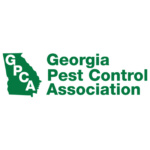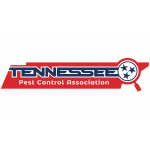How to Identify Different Termite Species
Termites might be small, but they can cause immense damage to homes, buildings, and other wooden structures. Identifying the type of termites you’re dealing with is the first crucial step in controlling and preventing infestations. Different termite species behave differently, have unique habitats, and target specific types of wood. This post will provide a clear guide on how to identify common termite species, helping you take the right actions to protect your property.
Understanding Why Identifying Termite Species Matters
Not all termites are equal. Some species are more destructive than others, while certain types thrive better in specific geographic locations or climates. By accurately identifying the species, you can:
- Design targeted pest control strategies.
- Prevent significant property damage.
- Save money on unnecessary treatments.
Now, let’s break down the most common termite species, how to identify them, and what you can do if you spot these wood eaters.
Common Termite Species and How to Identify Them
1. Subterranean Termites
What are they?
Subterranean termites are some of the most destructive termites in the world. They live underground in large colonies and build intricate mud tunnels to access food sources above ground.
How to identify them:
- Appearance: Worker termites are creamy white, about 1/8 inch long, and have soft bodies. Soldiers have a more distinct yellow-brown head with strong mandibles for defense.
- Signs of infestation: Look for mud tubes running along walls, foundations, or concrete. These tubes protect termites as they travel to and from food sources. Swarmers (reproductive termites) might also be spotted during spring.
- Preferred habitats: They thrive in damp soil and usually target wood that’s in contact with the ground.
2. Drywood Termites
What are they?
Unlike their subterranean cousins, drywood termites live inside dry wood without requiring soil.
How to identify them:
- Appearance: Drywood termites are slightly larger than subterranean termites. Workers are white, but you’re more likely to spot their swarmers, which are light brown and about 1/2 inch long.
- Signs of infestation: Their droppings, known as frass, are a key indicator. These tiny wood-colored pellets often pile up near infestations. You might also see wooden surfaces with a hollow sound when tapped or visible damage like galleries in wood.
- Preferred habitats: Drywood termites favor furniture, wooden beams, and other timber that is not damp.
3. Dampwood Termites
What are they?
True to their name, dampwood termites prefer moist wood. They’re less common in homes, but they can still cause significant damage.
How to identify them:
- Appearance: Dampwood termites are larger than both subterranean and drywood termites, with some reaching up to 1/2 to 5/8 inch in length. They have a light brown to darker reddish-brown body.
- Signs of infestation: They don’t leave mud tubes like subterranean termites, but you’ll often find wood that appears significantly weakened or damp with obvious termite galleries inside.
- Preferred habitats: Look for them in leaky basements, rotting logs, or areas where wood is exposed to excessive moisture.
4. Formosan Termites
What are they?
Formosan termites are often referred to as “super termites” because of their massive colonies and ability to cause widespread destruction rapidly.
How to identify them:
- Appearance: Workers look almost identical to subterranean termites but are slightly larger. Swarmers have an orange-brown body and are around 1/2 inch long with long wings.
- Signs of infestation: Formosan termites create large mud nests in structural timbers or within walls. They can form huge colonies with millions of termites, leading to extensive damage in short time frames.
- Preferred habitats: These termites are versatile and can establish colonies in both soil and dry wood.






